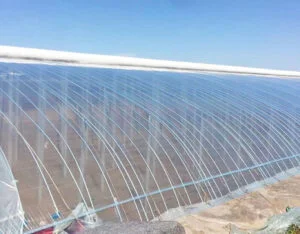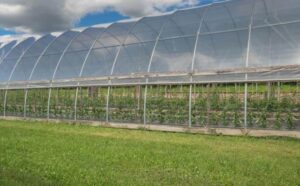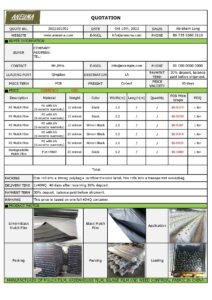Introduction
In the world of modern agriculture, advanced techniques and technologies have revolutionized the way crops are grown. Two such innovations that have gained prominence are polyhouses and greenhouses. These structures provide controlled environments for plant cultivation, enabling farmers to grow a wide range of crops throughout the year, regardless of external weather conditions. While both serve a similar purpose, they differ in terms of design, materials used, and overall efficiency. In this article, we will delve into the key differences between polyhouses and greenhouses, and provide insights on how to choose the right type for your agricultural needs.

Polyhouse and Greenhouse: A Comparative Analysis
To better understand the distinctions between polyhouses and greenhouses, let’s examine the key factors that set them apart:
| Aspect | Polyhouse | Greenhouse |
|---|---|---|
| Structure | Typically constructed using a metal framework covered with polyethylene or other plastic materials. | Primarily built with aluminum or galvanized steel frames, featuring glass or polycarbonate panels. |
| Insulation | Polyethylene covering offers moderate insulation, providing some protection against temperature fluctuations. | Glass or polycarbonate panels offer superior insulation, better retaining heat and reducing energy costs. |
| Light Transmission | Allows sunlight to enter, but may scatter light, potentially affecting plant growth uniformity. | Provides excellent light transmission, minimizing light scattering and creating optimal conditions for plant photosynthesis. |
| Temperature Control | Offers limited control over temperature through ventilation and shade nets. | Allows precise temperature control through ventilation, heating systems, and advanced climate control technology. |
| Durability | Polyhouses may have a shorter lifespan due to plastic coverings being susceptible to wear and tear from weather conditions. | Greenhouses tend to be more durable, with glass or polycarbonate panels being resistant to environmental stressors. |
| Cost | Generally, polyhouses are more cost-effective in terms of construction and maintenance. | Greenhouses are comparatively more expensive due to the higher quality materials used and advanced systems for temperature and climate control. |
| Suitable Crops | Ideal for growing vegetables, flowers, and some fruit crops. | Suitable for a wide range of crops including delicate flowers, high-value crops, and plants that require precise environmental control. |

Choosing the Right Type for Your Needs
Selecting the appropriate structure for your agricultural venture requires careful consideration of several factors:
1. Purpose and Crop Selection
The type of crops you intend to grow plays a pivotal role in determining whether a polyhouse or a greenhouse is more suitable. If you plan to cultivate high-value or delicate crops that require precise environmental conditions, a greenhouse might be the better choice due to its advanced climate control capabilities. On the other hand, if you’re looking to grow vegetables or flowers on a larger scale, a polyhouse could be a cost-effective solution.
2. Location and Climate
The local climate and environmental conditions should heavily influence your decision. If your region experiences extreme temperatures, strong winds, or heavy snowfall, a greenhouse’s sturdier construction and superior insulation might be advantageous. Polyhouses are better suited for areas with milder climates, where they can provide the necessary protection and temperature moderation without the need for extensive insulation.
3. Budget and Longevity
Your budget will also impact your choice between a polyhouse and a greenhouse. While polyhouses are generally more affordable upfront, they might require more frequent maintenance and replacements due to the wear and tear of plastic coverings. Greenhouses, although pricier, offer greater durability, potentially offsetting the initial cost over the long term.
4. Technological Requirements
Consider the level of technology you wish to implement in your growing operation. Greenhouses allow for more advanced climate control systems, which can optimize conditions for crop growth. If you’re aiming for precision in temperature, humidity, and light control, a greenhouse might be the better investment.
5. Expertise and Labor
Managing a greenhouse’s advanced systems requires a certain level of expertise and skilled labor. Polyhouses, with simpler designs and fewer technological components, might be more manageable for those new to controlled environment agriculture. Assess your team’s capabilities before making a decision.

Conclusion
In the world of modern agriculture, both polyhouses and greenhouses have their distinct advantages and applications. Polyhouses offer cost-effective solutions for larger-scale crop cultivation, while greenhouses provide advanced climate control capabilities suitable for high-value crops and delicate plants. Making the right choice between the two depends on your specific needs, budget, location, and expertise. Regardless of your selection, both structures open the door to year-round crop cultivation, reduced reliance on external weather conditions, and the potential for higher yields and profits in your agricultural endeavor.

